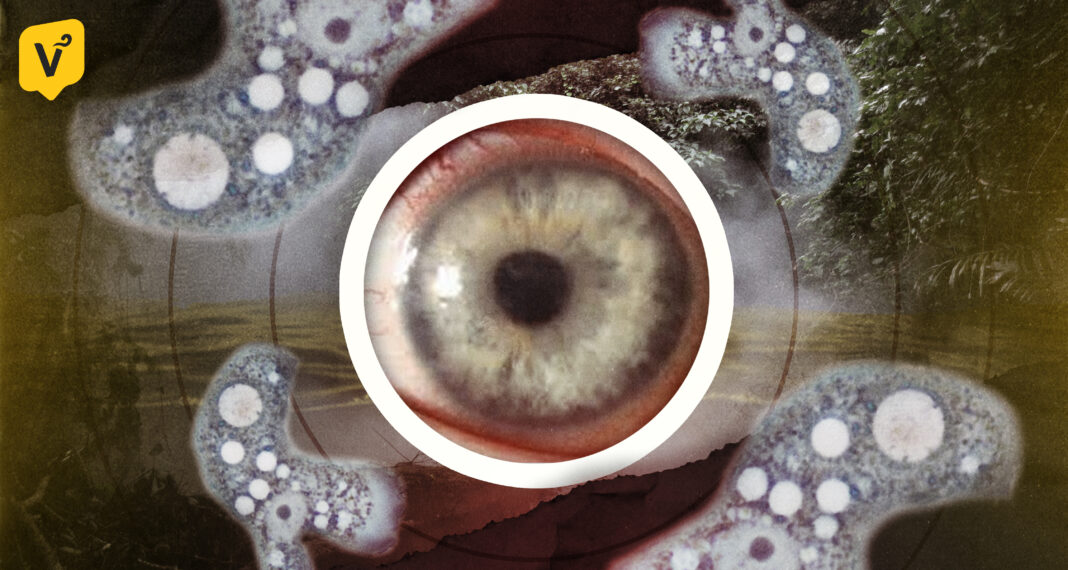BETWEEN 20,000 and 30,000 travelers annually visit Mt. Makiling in Los Baños, Laguna, to hike, swim on the hot springs found along the trail and witness the water bubble at the volcanic mud springs with a temperature of around 73 degrees Celsius.
Humans, of course, cannot swim in the mud spring because they will suffer from severe burns and tissue damage.
One parasite, however, can withstand the excruciating heat that, if left undetected in other forms of water, could cause eye and brain diseases to people and pose a health threat among tourists.
Senior Medical Technology students – Criselle Selis, Isabella Caburnay, Angela Cunan, Aleli Cuevas, Fritz Irish Avila, Piolo Blanco and Kenneth Banal – found that a free-living amoeba, possibly a new species of the genus Acanthamoeba, has been thriving at a mud spring in Makiling even though the organism typically survives up to temperatures of just 45 degrees Celsius.
“[T]his organism is highly thermophilic, and when free-living amoeba becomes highly thermophilic, it becomes more virulent, which means it can cause disease,” Asst. Prof. Giovanni Milanez, a faculty member at the UST Department of Medical Technology who served as the research adviser, told the Varsitarian. “So the more virulent they are, the more fatal conditions they can induce in mammalian hosts.”
The study, titled “First report of Acanthamoeba spp isolation from Flat rock streams and volcanic mud spring in the Philippines,” won the international award for research at the Japanese Association of Clinical Laboratory Systems (JACLaS) Expo 2023 held in Yokohama, Japan, from Oct. 6 to 8. Medical Technology faculty members Asst. Prof. Frederick Masangkay, Prof. Edilberto Manahan and Prof. Ma. Frieda Hapan served as co-advisers.
Health authorities have often cited boiling water as an effective procedure to kill viruses, bacteria, protozoa and pathogens because it damages their structure and life processes.
Not Acanthamoeba. Its heat resistance is “the first of its kind,” said Milanez, and it is present in freshwater sources such as lakes and rivers.
If direct contact occurs, one of the severe infections resulting from it is Acanthamoeba Keratitis, a condition that affects the transparent outer layer of the eye called the cornea. The amoeba consumes the cornea’s layers and causes tissue destruction as it traverses the eye.
This rare infection, though not contagious, can cause permanent vision loss or eye impairment.
Another attributable disease is Granulomatous Amebic Encephalitis, wherein patients exhibit seizures, headaches and skin lesions. Survival is unlikely as death comes between seven and 120 days on the onset.
“Acanthamoeba organisms can climb […] the olfactory bulb, and then eventually go up the brain; the problem is we do not have an established diagnosis protocol in our hospitals,” Milanez said. “[W]e don’t have a based therapeutic regimen. So meaning, walang gamot.”
Based on data from the World Health Organization (WHO), the overall mortality rate for Acanthamoeba infections is estimated to be around 95 percent.
In comparison, amoebiasis, the commonly known disease attributed to amoeba that is spread through feces and caused by Entamoeba histolytica, has a mortality rate of less than one percent when treated, according to the United States National Library of Medicine.
Milanez hopes his students’ research will shed light on an overlooked “public health threat” that may endanger tourists fond of swimming in lakes and rivers. The team is working on a tourist map to identify places where Acanthamoeba is present based on the data they have already collected.
“It’s very important to identify places, especially swimming pools and lakes, where these organisms are present so that we can warn the public of their existence,” he said. “And we need to be very careful in utilizing these freshwater reservoirs, especially when summer comes.”
The Philippines boasts over 400 principal rivers and 70 natural lakes, data from the Department of Environment and Natural Resources shows.
During the data gathering, Milanez was surprised that some locals believed that visitors getting sick after bathing in lakes was caused by supernatural elements. Makiling itself is the subject of a popular legend about a lady tasked to protect the mountain.
“[T]he enchantment is pitiful,” the faculty member said. “The real culprit is not a spiritual type but rather an amoeba living and residing in those waters. Now how they [sic] get it? Because they’re not cautious enough when they swim.”














